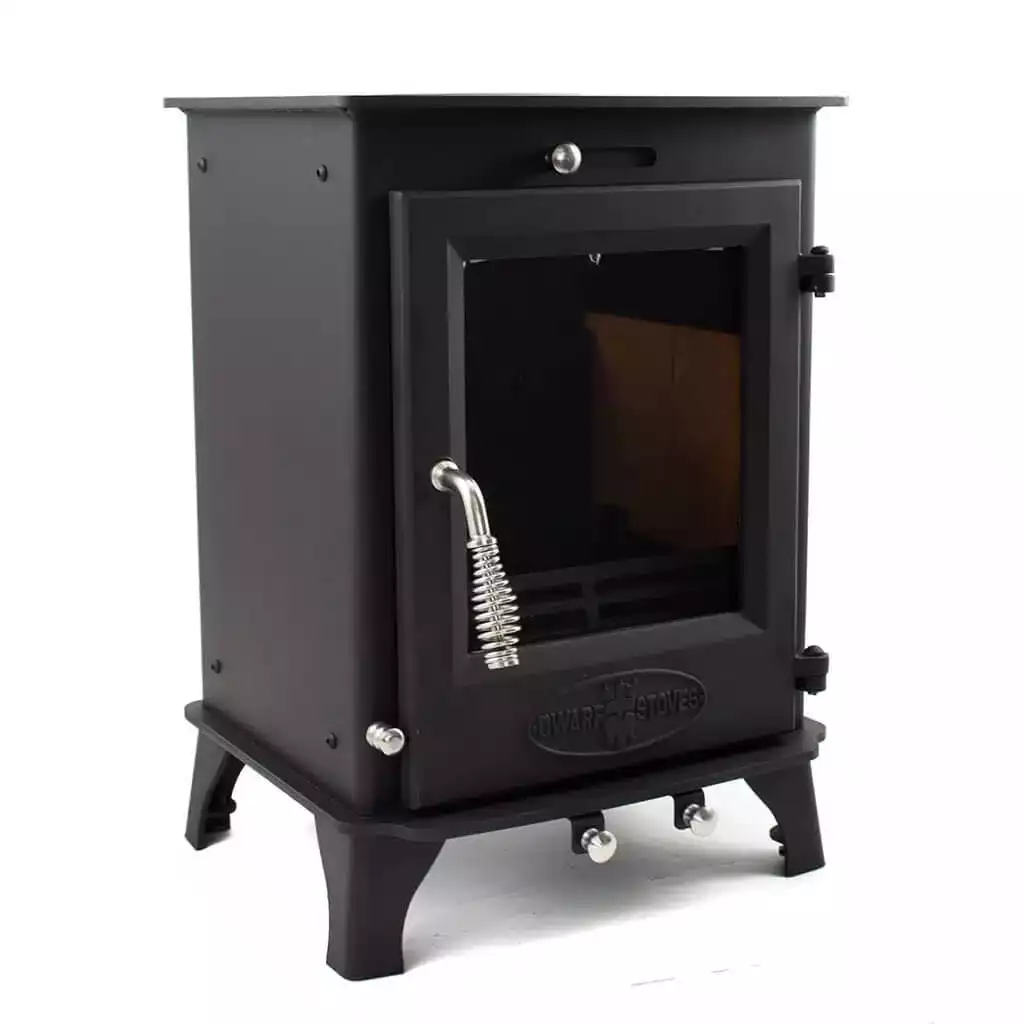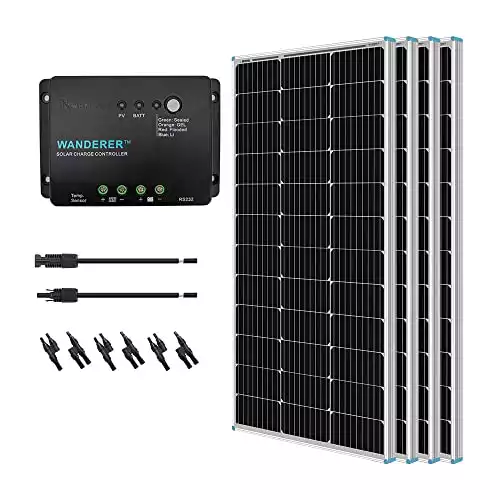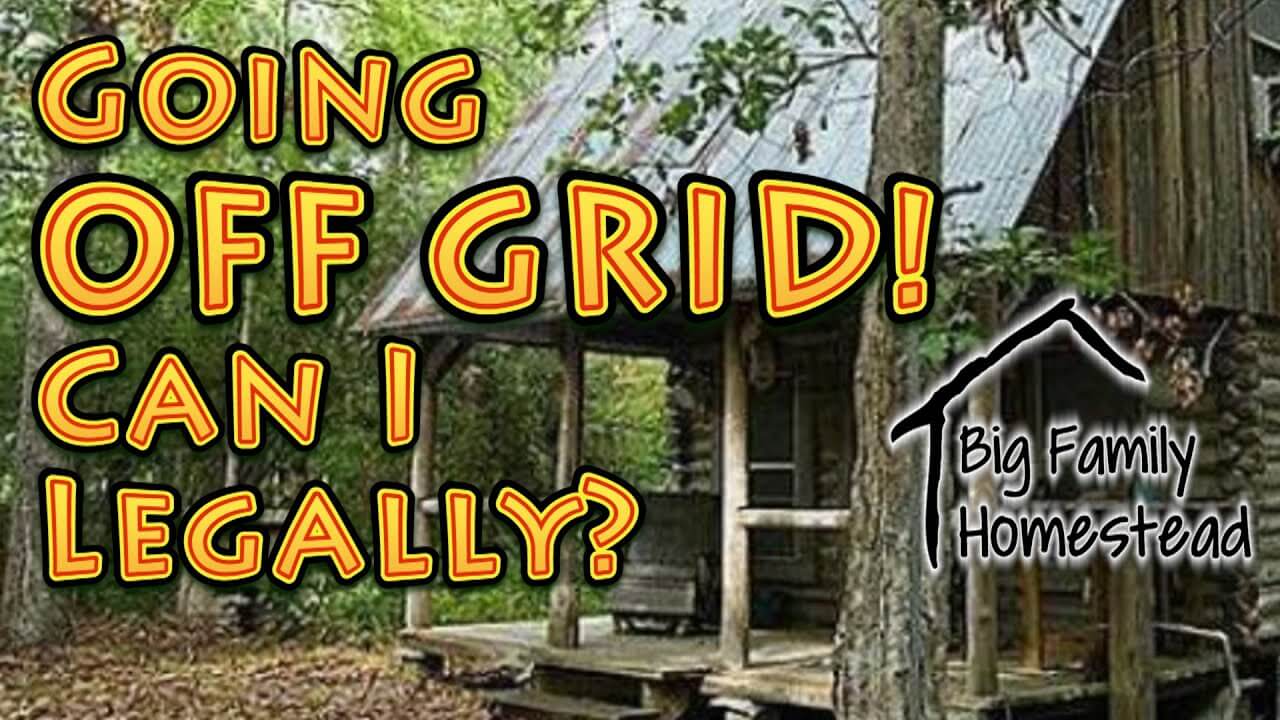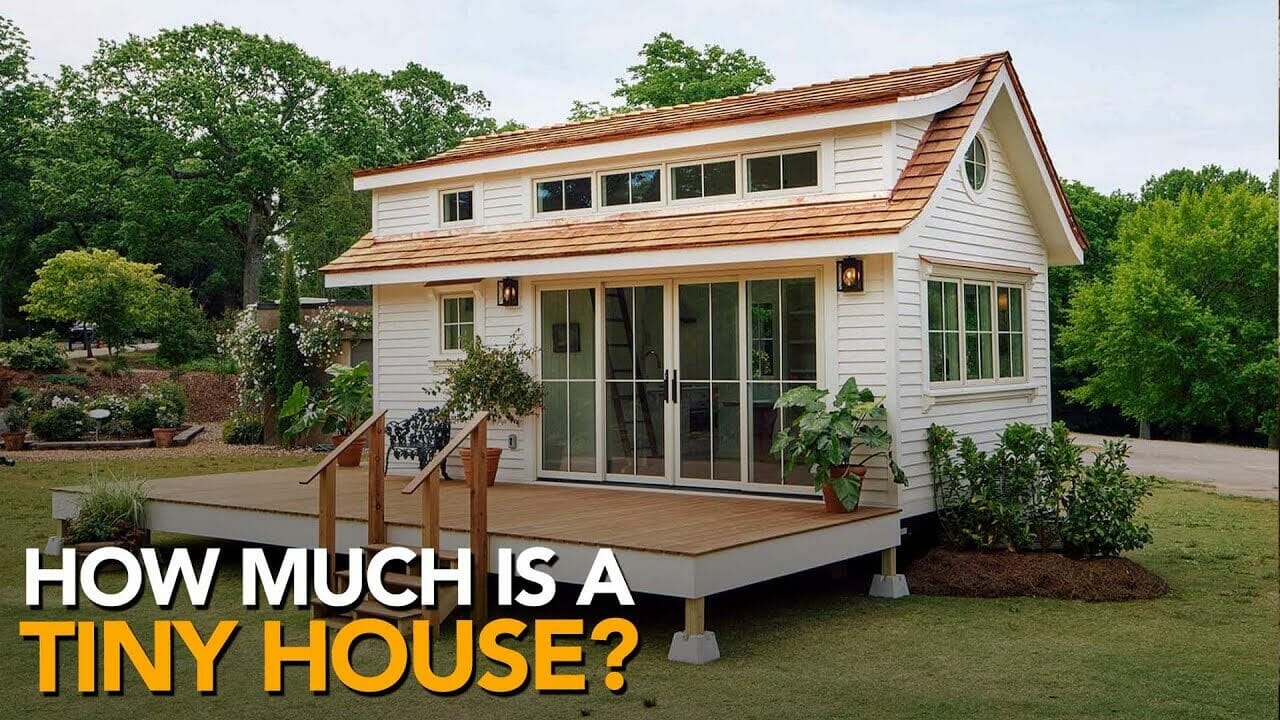How to Make a Shed Livable on the Cheap
With the move to more minimalistic living, transforming a regular storage shed into a livable space has become an attractive lifestyle choice for many.
Gone are the days of this only being an option for the ultra-poor – compact living has become trendy, and what better way to save money than to customize a basic structure to create a comfortable living space?
To make a shed livable, it needs to be converted into a tiny home. It is essential to obtain the correct permits to connect water, power, and sewerage. The walls and floor must be insulated, and the entire unit sealed. Other considerations include HVAC and ensuring there is a solid foundation.
Transforming a shed into a livable space will take a lot of time and money. However, it can be a hugely rewarding project, and if you do it right, you will love your snug little home or she shed.
Remember to take plenty of photos before you start because you will want to show them off to your friends when they come over for the housewarming.
Can You Live In a Storage Shed?
Let’s clear this up immediately. It is not legal or advisable to live in a storage shed. Reasons for this include everything from security issues and lack of insulation to being a total fire hazard.
A storage shed is designed and constructed for the purpose of storage – of tools, equipment, and other stuff.
However, don’t stop reading yet. With some modifications and the correct permits, it is possible to convert a storage shed into a livable space.
However, this is not a weekend project, as things could go horribly wrong if you don’t get the basics right. That would end up costing you a lot of money.
It is highly advisable to get professional installers when needed and always obtain the correct permits – living in an unsuitable structure will not only be unpleasant, it can be downright dangerous.
Connecting Water to Your Shed
The ‘Big 3’ of converting a shed into a dwelling are water, power, and a sewerage system. The rest can be worked around and figured out, but your project is unlikely to succeed without these three essentials. Connecting water to your shed is usually the least complicated of the three.
Budget to have a professional install your water line. Even if your plumbing skills are good, keep in mind that any mistakes or a frozen water pipe in winter could cause irreparable damage.
So it is advisable to have professional experience and guarantee, even if it’s only for your own peace of mind later. This will also make obtaining the necessary inspection documents less tricky.
Connecting Power to Your Shed
Power is another essential part of making your shed into a home. This is not an aspect of the project that you can DIY. If your shed is in a city area where you could hook into the existing grid, get the necessary permits and hire a professional to do the installation.
Plan to install ample outlets, so you don’t need to move things about later, and don’t forget to also add some outlets on the outside of the shed for future extensions and outside lights, etc.
If your shed will be in a remote location, or if you would like to join the growing trend towards renewable energy, a solar power kit is an excellent option to explore.
However, keep in mind that a solar system is unlikely to run a heating system in a small shed home, and you’d need additional equipment like a small wood stove and gas water heater to make it livable.
Connecting Sewer to Your Shed
To make a shed livable, it will not only need running water and a toilet. That means it will need to be connected to the system or some type of septic tank system.
Unless your shed is in a remote area, it is highly recommended to get the correct permits and carefully follow the codes to avoid an unpleasant disaster on your hands in the future.
Like water and power, a professional should connect to the sewer line. Things could go horribly wrong, and a bit of saving in the summer could be a nasty frozen pipe mess in the winter.
Installing HVAC in Your Shed
One of the biggest challenges of shed living is humidity control. It can be an absolute headache.
Shed conversion sites often emphasize sealing and insulating the space so it will retain a comfortable temperature but often forget that a warm sealed environment is often the perfect environment for mold to set in. Always keep a dehumidifier high on the list of basic HVAC required.
When planning to convert a shed into a habitable space, whether as a tiny home, man cave, or she shed in the backyard, plan with all seasons in mind.
Space inside a small shed will be challenging, so you must keep this in mind during the planning phases. Because of the limited space, ductless systems or ones that can be wall-mounted are preferable.
How Much Does It Cost to Make a Shed Livable?
While converting a shed into a livable space will undoubtedly cost you less than purchasing a full-size home, it is a mistake to think that it will be cheap.
Even if you draw up a comprehensive budget for your project, adding at least 20% extra is advisable to cover things you’ve forgotten, challenges that crop up, or increases in prices.
Remember that a shed is designed and manufactured to be a storage unit for items like tools. To transform a thin-walled basic shed structure into a livable space, whether as a tiny home or as an extra room for craft projects behind the main house, is not a quick or cheap project.
The cost of getting a building permit varies and takes about two weeks to be approved and issued.
Livable Sheds With Double Glazing
While creating a she shed may be a fun summer project, planning and designing with the dead of winter in mind is essential. Double glazing will cost considerably more than single-pane glass windows, but the savings in energy efficiency will reduce your heating bill in the long run.
The cost of double-glazed windows is directly related to the size of the window and the frames you choose. While wooden or plastic-based frames will certainly set you back less than aluminum, they may not be as durable.
So if the shed will be used to live in rather than a backyard office shed, it is advisable to invest in the highest quality material you can afford at the outset.
Livable Sheds With Electricity and Plumbing
A shed without electricity and plumbing is not deemed livable. When you add electricity and plumbing to a shed, you must ensure that you have the necessary permits and comply with the building codes in your area.
Keep in mind that you may also need approval from your local Home Owners Association before turning a shed into a livable unit.
Whenever possible, a professional must add power and plumbing to a shed. This will increase the cost of your shed project more initially, but it is worth getting it right the first time.
Installing power and water is not simply a matter of digging a trench and burying a couple of pipes. Besides being a possible safety hazard, an incorrectly or illegally wired structure can affect the overall value of a property.
Livable Sheds With Bathroom and Kitchen
A shed with a bathroom and kitchen is no longer a shed and can definitely be called a tiny house. The kitchen and bathroom areas are undoubtedly the most complex areas inside the unit to fit correctly.
These two essential areas require a perfect fusion of all the amenities, including water, power, and HVAC.
The main costs of equipping the shed’s interior are usually concentrated in the kitchen and bathroom sections.
One needs to replicate the functional purposes of these two areas and cleverly pack them into a minimal space. When budgeting, don’t forget to include a water heater in your list of necessities.
Livable Sheds With Fireplace and Natural Gas
While a fireplace adds warmth to any setting, creating a working fireplace in a timber shed structure does not make sense. In cold climates, small freestanding electric, wood stoves, or pellet fireplaces are often used to heat tiny homes, but an electric heater would make far more sense and is safer.
Staying warm can be a problem, but that is where careful planning and preparation come into play. There are quite a few things you can do to keep your shed warm:
These four preventative measures will go a long way to keep the tiny home snug and warm without running up a massive power bill.
 The Dwarf - 5kw Tiny Wood Stove
The Dwarf - 5kw Tiny Wood Stove
- Extremely durable cast iron door and firebox deliver outstanding heat retention making this little wood stove ideal for sheds and tiny homes.
- The large door window helps with flame monitoring and is equipped with a slidable air wash valve to keep the glass clean.
- The top or rear flue exit and top cooking surface make this tiny stove the perfect wood burner for spaces between 2 - 500 sq.ft 🔥
- Riddling grate and ash pan for easy cleanup with burner control via two air regulation valves at the bottom of the stove for burner optimization.
Livable Shed Design Ideas
Transforming a utility shed into a livable space often requires a lot of creativity. With careful planning and some tricks like using French doors to let in light and open up the area, an old shed can transition from a gloomy storeroom to a livable space.
When thinking about the interior design for your shed, let your imagination run free. It will be your space – let the inside form follow the intended function.
If you are only using it for a daytime office and the shed is in your backyard, you may not need a sleeping area or shower, giving you more space for a comfy reading nook or crafting area.
Lounge Room Design Ideas for Sheds
A great space-saving idea for a shed interior is to use a murphy bed – that way, you won’t have wasted lounge space during the daytime and can keep your bed neatly folded or tucked under something else until you need it.
A fold-down sofa bed with storage and a great space saver is also a good idea.
Avoiding clutter can make the space look bigger than it is. Because space is limited inside your shed, keeping the color scheme light and including extra windows is usually advisable. There are plenty of inspiring creative shed interior ideas available on Pinterest.

Kitchen Design Ideas for Sheds
Storage is always a challenge in tiny kitchens. However, carefully choosing what appliances you actually need and getting miniature versions of those will make the area feel significantly larger.
Optimize each square foot of space designated for kitchen use by cleverly fitting drawers and having shelves up to the ceiling.
A great kitchen in a small space starts with an excellent floor plan. Avoid just blocking off an area in your design where you plan to unpack your kitchen equipment.
Remember that you will need storage space for everything from pantry supplies to your crockery and glasses, so work in hidden cupboards and shelves wherever you can.

Bathrooms Design Ideas for Sheds
The bathroom is arguably one of the most challenging areas to get right when making your shed livable. A lot is going on in the space, including water, drainage, power, sewerage, and ventilation. Unlike a traditional home, you will also be working in a very compact area.
However, on the plus side, although a bathroom is an absolute necessity, it only has to be functional. You won’t be spending loads of time socializing in the bathroom, so the size can be dictated by the depth and width of your shower.
Unless you have a huge shed, a tub is not a great idea, as you will have to devote two to three times more space to your bathroom to accommodate it. The usual setup for a tiny house is a hand basin, toilet, and shower area with as much storage as the space will allow.

Essential Appliances Livable Sheds
One of the biggest challenges for anyone moving to tiny home living is finding appliances that will fit the smaller space. The main requirements are that they all need to be compact, practical, and effective.
The most essential appliances depend on your lifestyle. For example, unless you do a lot of baking, an outside grill with a lid, like a Blackstone, may serve the purpose, so you may not need an indoor oven.
Or you could choose a tiny countertop oven like this one from Chefman. Your front loader washing machine could then fit below a twin-plate in your unit.
Let’s go through some appliances that are usually required to make your shed comfortable:
The type of appliances you will require depends on what you will be using your shed for. If you intend to live in the shed, you will need a far greater selection of appliances than if you are only using it as a quiet backyard she shed.
 Renogy 400W 12V Off-Grid Solar Kit
Renogy 400W 12V Off-Grid Solar Kit
- This 1600Wh solar panel kit is suited for off-grid applications that require a smaller-sized footprint, making it ideal for tiny homes, garden sheds, and RVs.
- Fully corrosion-resistant aluminum frame for outdoor use, allowing the panels to last for decades while withstanding high winds (2400Pa) and snow loads (5400Pa).
- Equipped with electronic safety protections to prevent electrical overload, short-circuit, and reversed polarity for longevity and performance.
- Easy out-of-the-box setup with predrilled holes allowing for a super fast installation reducing the need to hire an electrical contractor.
How to Make a Shed Livable FAQ.
Turning a basic shed shell into a livable space has become an attractive option for many. It’s no longer just a fad, and the tiny house movement is fast gaining momentum.
However, there is a considerable difference between a shed and a livable space. Let’s go through a few frequently asked questions to guide you through the process.
Is It Legal To Live In a Shed?
It is not legal to reside in a shed. Living in a shed that has not been set up correctly would offer little more protection than living in a tent. Before contemplating converting your old shed space into a livable unit, keep in mind that it is a big project with plenty of elements.
Sheds are designed and built as storage spaces. However, you can convert a shed into a livable space by getting the proper permits and complying with the conditions set out by your local council and HOA.
You can convert a shed into a tiny legal home with proper planning and the correct paperwork.
Can You Legally Live In a Converted Shed?
You can most definitely live in a converted shed provided that you have the planning permission and provide assurance that your shed will comply with the relevant city or council building regulations.
When considering applications, most local codes consider three factors: Health, Welfare, and Safety. It’s no good if you convert your shed and all goes well, but the sewerage line isn’t installed correctly and overflows next to your neighbor’s fence.
So, yes, you can live in a converted shed, but it must be converted to such an extent that it is safe and livable. By the time you get to live in it, it will be called a small house or a cabin because it should no longer be recognizable as a storage shed.
What Permits Do You Need to Convert a Shed Into a Home?
Firstly, before embarking on any shed conversion project, you need to ensure that the area you live in allows additional rooms to be added behind existing homes. If the shed is on a separate property, check that the type of structure you want to put up is permissible.
Zoning codes will affect if you can proceed with the conversion. Some municipalities have minimum square foot regulations, so it is well worth checking if you would be able to convert an existing shed into a home. If ordering a shed kit, you would need to make sure that it was big enough to qualify as a home.
The cost of permits to add plumbing and electricity will cost between $500 and $2000, and your new tiny home will need to undergo a series of inspections before you can occupy the building.
What About a Tiny House Shed Conversion?
While it may take time and effort to convert a shed into a legal and comfortable tiny house, you can use your tiny house as storage anytime.
Transforming a shed into a tiny house will be considerably less expensive than purchasing a tiny house kit, but beware, storage sheds don’t usually need permits, while inhabited outside rooms always do.
It can feel like a major hiccup getting through all the red tape in terms of permits and inspections to make your shed into a tiny house, but keep in mind that these regulations are there for a reason. Unexpected weather events or fire hazards, shifting foundations, flood zones – the list is endless.

Shed Vs. Tiny House
The Tiny House Movement has grown in the last few decades. People are downsizing and choosing compact living over expansive properties that require loads of maintenance. You may be confused between the terms shed and tiny house. These are not the same.
With the correct permits, the addition of power, plumbing and sewerage, and a lot of work, a shed can be transformed to become a tiny house. Let’s take a quick look at the differences between a shed and a tiny house:
| Shed | Tiny House |
| An outbuilding | Intended for human habitation |
| Intended for storage | It may be on a solid foundation or wheels |
| Usually just a shell | Has compact inside design and insulation |
| A lot cheaper than a tiny house | A lot more expensive than a shed |
Should You Build a Shed or Tiny House?
The decision of whether to build a shed or a tiny house depends entirely on what the structure will be used for.
Tiny houses are exactly that. They are miniature versions of traditional homes, and often they are set on wheels so they can be moveable. If you intend to live in it and have the budget, invest in a tiny house right away.
However, some tiny homes are intended to stay put and are constructed with solid foundations. They are then regarded as modular homes, and the structure must adhere to all local codes.
Aspects like plumbing, power, insulation, and sewerage have already been considered if purchasing a tiny home, so getting the necessary permits to reside in it will be much less problematic than erecting a shed and starting from scratch to convert it.
If you only need to use your shed as a she shed or man cave, starting out with a shed may be more affordable.
How Do I Convert A Shed Into a Tiny House?
The first step in converting a shed into a tiny house is to get the correct building permits to allow the structure to become habitable. This process may feel like a giant stumbling block in a great plan, but don’t try to get around it.
Work within your municipal and zoning regulations and use the time while waiting for the approval paperwork to practice small-scale living, so you know what essentials you will need in your tiny house.
The essential initial steps will be to provide power, water, and sewerage. Budgeting for and hiring a professional to install these amenities is always recommended.
Once you have power and water (including sewerage and drainage) in your shed, it will need to be insulated to make it comfortable. It is vital to ensure that your shed is set on a solid foundation to prevent moisture or termites from creeping in from the floorboards and destroying all your hard work.

How Much Does It Cost to Convert a Shed Into a Tiny House?
To make a shed into a tiny house, you will need to add power, water, sewerage, and insulation.
You also need to ensure that the entire structure has the necessary permits to be classified as a dwelling. As you can imagine, this is by no means a weekend project, but it can be well worth the effort in terms of affordable living.
The project’s cost depends mainly on whether you are starting with an existing backyard shed that you want to convert or if you are purchasing a new shed kit. The land cost also needs to be factored in if you place it somewhere other than in your own backyard.
Besides the building permits, which could run up to around $2000 depending on where you live, the highest costs will be as follows:
A basic shed kit (if you are starting from scratch) – up to $10,000
Note, factor in the cost of smaller appliances, as chances are you may not be able to put your regular-sized fridge-freezer and oven into your tiny house.
How Much Does It Cost to Build Your Own Tiny House?
Although designing and building your own tiny house will cost less, it is not a job for a novice. Everything from getting the permits and laying a gravel base will cost you money, and that is before you have even started on the actual house.
Remember that getting a mortgage for this type of home is difficult, so be prepared to have a tidy sum on hand upfront. Current estimates indicate that the materials alone to construct your own tiny house can range from $20,000 to $60,000.
Then there is where you plan to put it, the permits, adding utilities, etc.
However, the big advantage of building your own tiny house is that you can customize everything. You can choose the floor design, and the quality of the material, from the floors to the roof, will be entirely up to you.
However, DIY building isn’t for everyone, and perfect little prebuilt tiny homes are available in a prefabricated form, making things a lot easier.
The Bottom Line
It is illegal to inhabit and live in a shed, and relevant building permits must be obtained before work begins. The most essential and complicated elements involve installing power, water, and indoor plumbing in the unit.
These should be done by a professional. A DIYer can do the rest, and other essentials to make a shed livable include insulation and an HVAC system.
It is entirely possible to make a shed into a livable space. However, it is not simply a matter of clearing out the tools and moving furniture into a shed. The process can be tricky, but it can be an exciting project if you are up for a challenge and have the finances.






